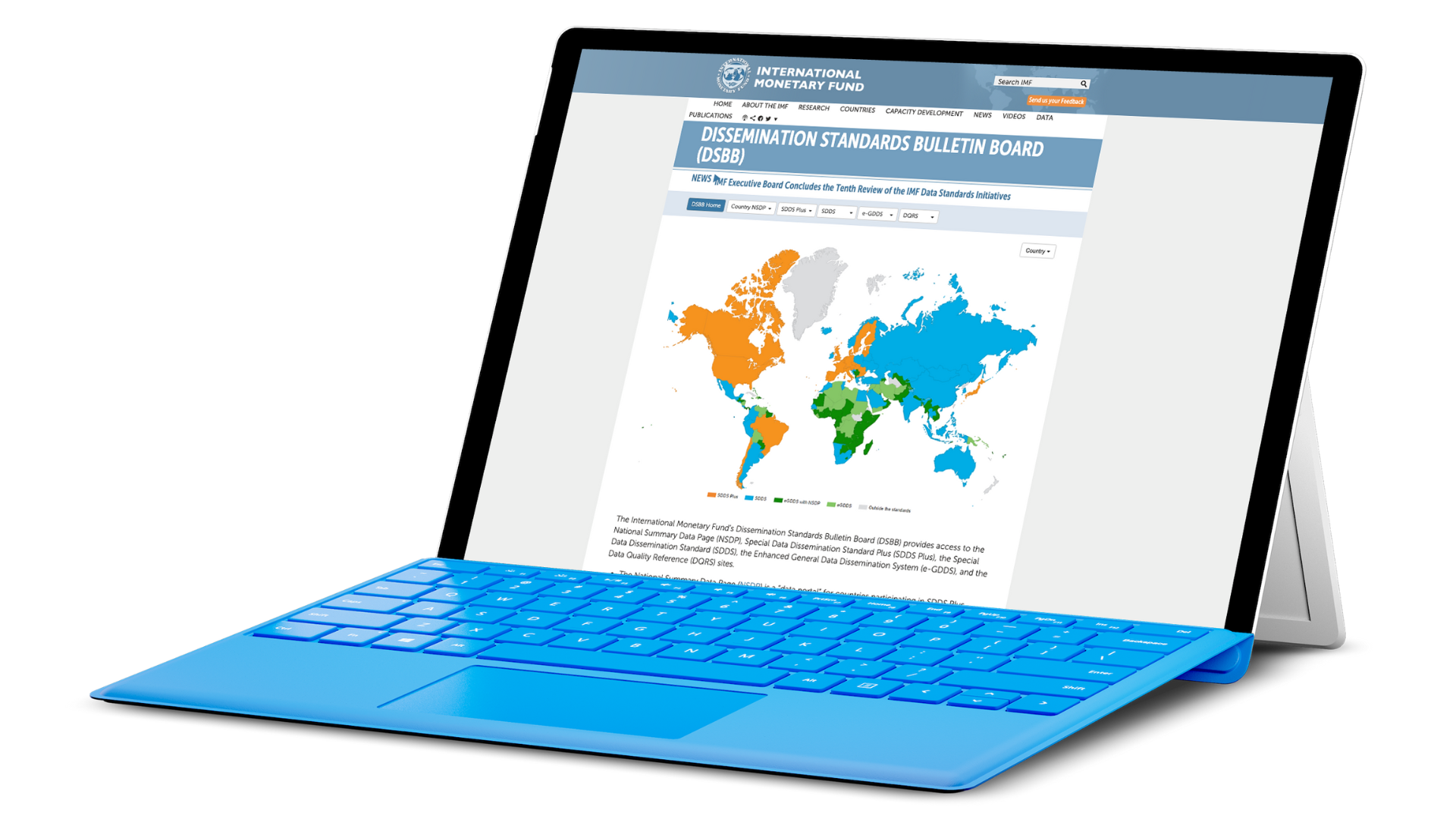
Keeping and publishing clear, reliable, and timely data on a country’s economy helps governments make sound economic policy decisions, for which citizens can hold them accountable. Data transparency also strengthens the credibility of a government’s economic management, which facilitates decision-making by market participants and other investors, ultimately helping economies grow.
One of the ways in which the IMF has enhanced country data transparency is by setting standards for voluntary dissemination of economic and financial data. The IMF Data Standards Initiatives encourage countries to publish key economic data in a timely and disciplined manner. Since its inception in 1996, the framework has reached nearly universal participation by IMF member countries. They participate in one of the three tiers of the framework—the Enhanced General Data Dissemination System (e-GDDS), Special Data Dissemination Standard (SDDS), and SDDS Plus—which are tailored to countries’ capacity and are progressively more stringent on data dissemination requirements and recommendations.
Through the years, the framework has adapted to the countries’ evolving policy priorities and data needs, and has been periodically evaluated by the IMF Executive Board, most recently in 2022. The latter introduced several modifications, including more detailed information on data related to public debt, climate change, and gender.

The IMF's Dissemination Standards Bulletin Board (DSBB) contains information and links to the National Summary Data Pages (NSDPs), a site where countries publish the data under the standards.
The Enhanced General Data Dissemination System (e-GDDS) is the first tier of the IMF Data Standards Initiatives. It was introduced in 2015 to help countries improve data transparency, encourage statistical development, and create synergies between data dissemination and surveillance. By doing so, it improves efficiency in data sharing and identifies critical gaps to help prioritize capacity development and donor support.
Many countries participate in the e-GDDS as a framework for publishing essential economic data and advancing to the higher tier, the SDDS. As of end-2022, 112 countries participate in the e-GDDS, of which 73 countries publish data through their NSDPs. Over half of the countries that are yet to publish the data are fragile states, and the IMF work is ongoing to support these countries fully implement the e-GDDS.
IMF research shows that when countries implement the e-GDDS or when they advance to subscribe to the SDDS, they experience a significant reduction in their sovereign spreads. Greater data transparency is rewarded with lower borrowing costs.
The Special Data Dissemination System (SDDS) was established in 1996 to guide IMF member countries that have or might seek access to international capital markets. Unlike the e-GDDS, where dissemination standards are recommendations for the countries to follow, under the SDDS, countries voluntarily commit to observe prescribed requirements for data publication. SDDS subscription indicates that a country meets the test of “good statistical citizenship."
The SDDS Guide for Subscribers and Users details commitments undertaken by a subscriber.
Subscribing countries commit to:
Disseminate the required data with the prescribed coverage, periodicity, and timeliness on their NSDPs.
Provide the IMF with an advance release calendar containing release dates for the current month and at least the following three months for each prescribed data category.
Provide detailed information about their statistical practices, or metadata, which are posted on the DSBB. The metadata follow the rigorous format of the Data Quality Assessment Framework (DQAF) which was developed by the IMF to assess the quality of countries’ economic and financial data.
Certify the accuracy of the metadata on an annual basis.
The SDDS Plus is the highest tier of the IMF Data Standards Initiatives. Established in 2012 to address data gaps identified during the global financial crisis, it aims to support domestic and global financial stability through data dissemination and to include economies that play a leading role in international capital markets. The SDDS Plus focuses on systemically important financial sectors that are integral to the working of the international monetary system.
All SDDS subscribers can adhere to the SDDS Plus. It includes additional requirements for data categories that a country commits to observe fully within five years of the date of adherence to the SDDS Plus.
The last update was April 2023